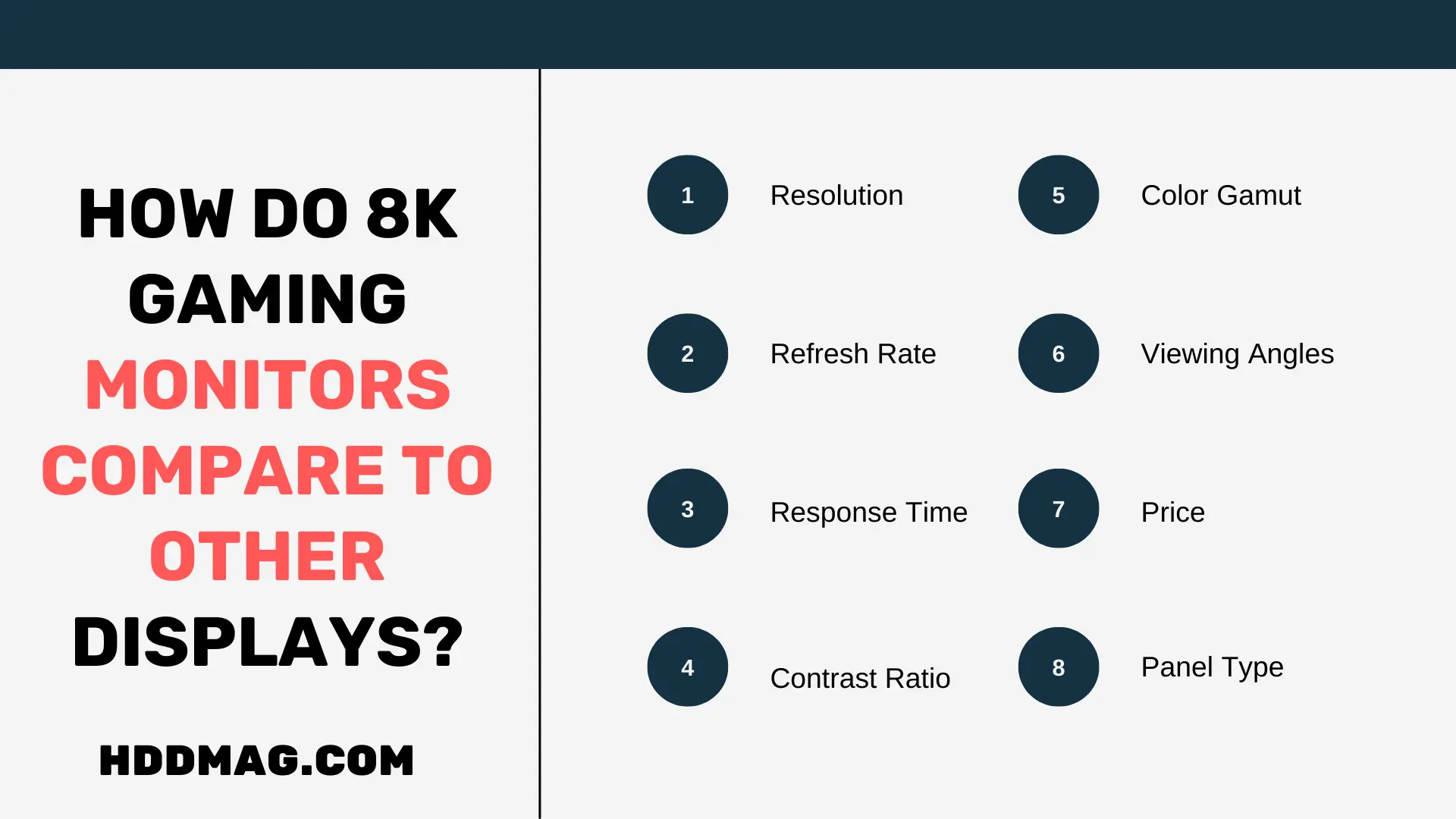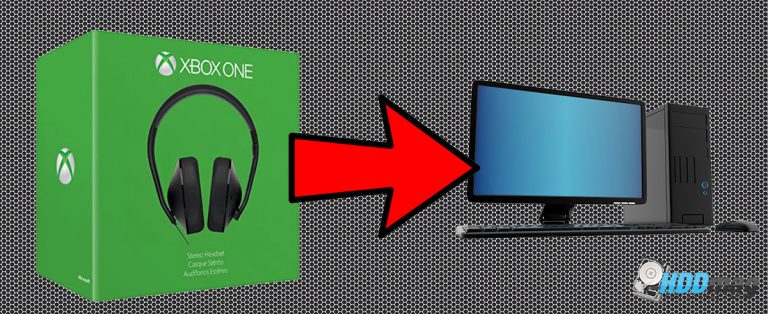How Do 8K Gaming Monitors Compare to Other Displays?

Gaming is a popular pastime, and as technology improves, so does the quality of displays used in gaming. Some gamers prefer 4K displays because they offer a sharper image with more detail than other displays. 8K displays offer even more resolution and detail than 4K displays, but they are not very popular yet. There are also 1440p and 1080p monitors that are still widely used by gamers. So which display is the best for gaming?
What Are 8K Gaming Monitors?
8K gaming monitors are the next big thing in PC gaming. They offer resolutions of 8192 x 4320, which is 16 times the resolution of a standard 1080p monitor. This means that you can see more of the game world and enjoy a more immersive experience.
8K gaming monitors are still in their early days, so they are not yet very common. However, they are becoming more popular, and there are already a few models available. If you want to get one, be prepared to spend a lot of money; they typically cost several hundred dollars.
8K gaming monitors offer many advantages over traditional 1080p monitors. They provide much sharper images and allow you to see more of the game world. They also tend to have faster response times, which can improve your gameplay experience.
How Do 8K Gaming Monitors Compare to Other Displays?

a. Resolution
8K gaming monitors are the next step up in resolution from 4K gaming monitors. 8K gaming monitors offer a resolution of at least 7680 x 4320, which is 16 times the resolution of a 720p monitor. This higher resolution allows for a much more immersive gaming experience.
However, 8K gaming monitors are still in their early stages and are not as widely available as 4K gaming monitors. In addition, they tend to be more expensive than 4K gaming monitors. So, if you’re looking for the best possible gaming experience, an 8K monitor is the way to go; but if you’re on a budget, a 4K monitor may be a better option.
b. Refresh Rate
8K gaming monitors not only offer high resolution image quality and provide an immersive gaming experience that is unmatched by other displays, but these monitors also offer a refresh rate of up to 60 Hz, which is significantly higher than the refresh rate of other displays.
This higher refresh rate allows gamers to enjoy smoother gameplay and eliminates the need for image interpolation, which can result in a poor gaming experience.
c. Response Time
Response time is the amount of time it takes for a pixel on a gaming monitor to go from black to white and back to black again. This is also known as the gray-to-gray (G2G) response time. A gaming monitor with a low response time will be able to display images quickly, which is important for fast-paced games.
8K gaming monitors feature a response time of just 1 ms, which ensures that all action is rendered smoothly and without any lag or delay. This higher resolution allows for a much more immersive gaming experience. You will not see any motion blur or ghosting even when playing fast-paced games.
d. Contrast Ratio
Contrast ratio is the measure of difference between the brightest and the darkest parts of an image. It is usually expressed in terms of ratios, such as 1000:1 or 10,000:1. A high contrast ratio means that there is a large difference between the luminance of the bright and dark areas of an image, while a low contrast ratio means that there is little difference. This can be important for viewing images in different environments, such as a bright room or a dark room.
In addition to the higher resolution, a higher refresh rate, and a faster response time, 8K gaming monitors also offer a higher contrast ratio than other displays. This means that they are able to produce deeper blacks and brighter whites, resulting in a more immersive viewing experience.
e. Color Gamut
Color gamut is a term used in color management to describe the range of colors that can be reproduced by a particular device, such as a monitor, printer, or scanner. Each device has a specific color gamut that it can reproduce, which is determined by the range of colors that the device’s sensors are able to detect. Some colors that can be reproduced by one device may not be possible to reproduce by another device, due to the difference in their respective color gamuts. The gamut of colors is determined by the device’s color space. Each color space has a different set of colors that it can produce. For example, sRGB (Standard Red Green Blue) has a smaller gamut than Adobe RGB.
In addition to their high resolution, 8K gaming monitors also offer an impressive color gamut. This means that they are able to reproduce more colors than standard HD monitors, providing gamers with more realistic and lifelike visuals. Many 8K gaming monitors feature a 100% sRGB color gamut, which means that they can display all of the colors within the sRGB color space.
f. Viewing Angles
Viewing angle is the angle at which you are able to see the image on the monitor. The ideal viewing angle for gaming monitors used to be when you are sitting in front of it and looking straight at the screen. This is because you will be able to see all of the details on the screen clearly. If you are sitting off to the side or if you are looking at the screen from an angle, you will not be able to see all of the details as clearly. However, this has since changed. Nower monitors allow perfect viewing even from the sides of the screen.
In terms of viewing angles, 8K gaming monitors offer the same viewing angles as other high-end displays. This means that people watching from off to the side will still be able to see the image clearly.
g. Price
8K gaming monitors are not cheap. The average price for one of these monitors is around $1,000.00. So, before making the decision to purchase one of these monitors, it is important to consider whether the additional cost is worth the improved visual experience.
There are a number of factors that can help determine this. For instance, how often does the gamer play games on a computer? How important are graphics and video quality to the individual? And finally, what other displays can the gamer work with that could provide a not-so-bad level of quality for a lower price?
h. Panel Type
Panel type is one of the main factors people consider when purchasing a gaming monitor. There are three types of panel technology used in displays today: Twisted Nematic (TN), Vertical Alignment (VA), and In-Plane Switching (IPS). TN panels are typically the cheapest and fastest, but they also offer the worst viewing angles and color reproduction. VA panels offer better viewing angles and color reproduction than TN panels, but they are not as fast and can be more expensive.
The main difference between 8K gaming monitors and other types of displays is the panel type. While most common displays use Twisted Nematic (TN) panels, and Vertical Alignment (VA) panels, 8K gaming monitors typically use In-Plane Switching (IPS) panels.
IPS panels offer several advantages over TN panels. First, they have a wider viewing angle, which means that they can be viewed from a greater distance without losing image quality. Second, they have better color accuracy and reproduce colors more accurately than TN and VA panels. Finally, IPS panels are less prone to motion blur than TN and VA panels, making them the most ideal for gaming applications.
Are There Any Drawbacks of 8K Gaming Monitors in Comparison to Other Types of Displays?
There are a few potential drawbacks of 8K gaming monitors in comparison to other types of displays. One is that 8K monitors are often more expensive than lower resolution models. Additionally, they can also be more demanding on hardware, so may not be as suitable for gaming on older or lower-end PCs. Another potential downside is that 8K content is still relatively limited, so gamers may not get the most out of their new monitor if they don’t have access to a lot of high resolution games or videos.
Is an 8K Gaming Monitor Right for You?
8K Gaming Monitors are the next big thing in the gaming world. They offer gamers higher resolutions and better graphics than ever before. But are they right for you? Here are a few things to consider before you make your purchase.
First, how much money do you have to spend? 8K Gaming Monitors can be expensive, so you’ll need to make sure you have the budget for one.
Second, what kind of games do you play? Not all games are optimized for 8K resolutions yet. If you’re mainly into first person shooter or racing games, an 8K monitor may not be the best option for you.
Finally, how often do you upgrade your computer? If you’re someone who likes to buy the latest and greatest technology, then an 8K monitor is definitely for you.
Conclusion
In conclusion, 8K gaming monitors are the future of display technology. They offer the best picture quality and gaming experience available. If you are looking for a new monitor, an 8K gaming monitor is the way to go.






